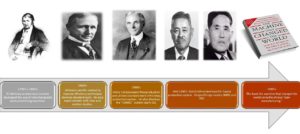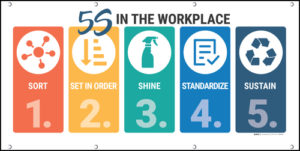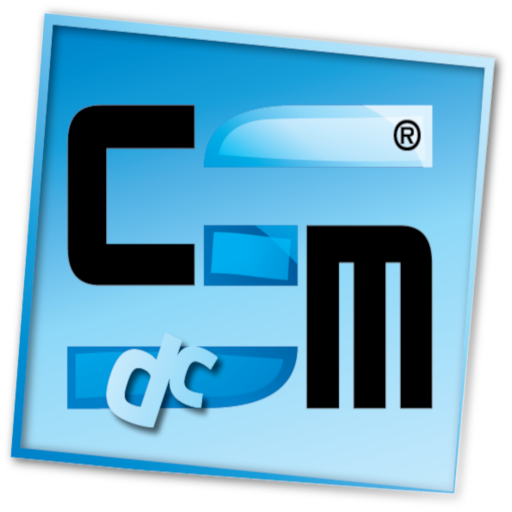If you want to take your office productivity up a notch, you don’t necessarily have to make huge and difficult changes. Surprisingly, simple and small adjustments can go a long way for your productivity journey.
The 5S methodology is a simple yet effective technique to improve the way your office functions.
History of 5S
5S is believed to have started as early as the 16th century with the Venetian shipbuilders in Venice, Italy.
They used quality inspection techniques in an assembly line approach to manufacturing ships for the royal navy. Fast forward to post-World War II, the Japanese automotive manufacturing industry gave way to the formal birth of 5S.
It became an organizational approach to workplace optimization and a tool for continuous improvement.

The 5S methodology equipped Toyota employees with the mindset that their contribution impacts the overall efficiency and quality of their products. With this implemented, waste was kept at a minimum and productivity maximized. The rest of the world caught up and began using the methodology.
We now see this being applied not only in factories, but in offices, financial institutions, and even hospitals.
5S Methodology
The 5S methodology derives from 5 Japanese words that start with “S.” Their English translations also start with “S” making it easy to remember them. Here are the 5 steps to 5S:
-
Seiri or Sort
-
Seiton or Set-in-Order / Straighten
-
Seiso or Shine
-
Seiketsu or Standardize
-
Shitsuke or Sustain

1. Seiri or Sort
Begin your 5S journey with sorting through the clutter. This step allows you to distinguish between what’s necessary and unnecessary. The purpose of this step is to discard what does not help in your day-to-day activities.
A good question to ask yourself is, “How does this item help me in my day-to-day work?” You might be surprised to discover how much “junk” you’ve been holding on to.
It’s also a good practice to have a sorting area to perform the Sort step. If you think an item may not be of value to you but is being used by a colleague, place it in a temporary bin. This will allow your teammates to review it and help you decide whether the item is needed or can be discarded.

2. Seiton or Set-in-Order / Straighten
Once you’re able to emerge from the clutter, it’s time to set things in order. The goal of this step is to make it easy for you and your team to retrieve things. Here you will focus on designing for functional storage. It would make sense to store items you frequently use within your arms reach.
Less frequently used items can go on a cabinet within your work area. Rarely used items can go on an office cabinet within your department floor. You can also label your storage areas for easy access.
Remember to have a place for everything and to return items after use. Otherwise, you’ll find yourself back at step 1. Think about storing items to lessen unnecessary motion from your team.
Arrange desks to be more conducive and collaborative for your team.

3. Seiso or Shine
You’ve accomplished order. Now it’s time to keep it clean and tidy. We don’t mean that you’ll need to dust your desk or mop your office floor (although we won’t stop you if you want to do this!).
What Shine refers to is maintaining the order you’ve created to keep the cog running smoothly.
One way is to conduct regular inspections and spot checks to ensure that things are where they’re supposed to be. When you keep things in order, it will be easier to identify irregularities and wastes.
By being organized, you can quickly correct these issues.
It’s also a good practice to have someone accountable or in-charge for inspection checks within your department.

4. Seiketsu or Standardize
If you’ve made it through the first 3 steps, congratulations! You now have a more organized workplace.
To really cultivate the 5S methodology in your organization, you will need to form habits. And when you’re just beginning your 5S journey, it’s easy to slide back to your old cluttered and disorganized habits.
Don’t treat this as a once-a-year spring cleaning project. It needs to become your office lifestyle to be effective.
In the Standardize step, we introduce policies and guidelines to maintain the order that you’ve established. Create documentation and standard operating procedures when applicable. Create record retention policies. Define schedules for inspection and application of 5S as a routine. Reminders and other visual management tools can certainly help in standardization of 5S in the workplace.

5. Shitsuke or Sustain
In order to sustain the implementation of the 5S methodology in your organization, everyone from the CEO and down needs to support and engage in the process.
Implement regular communications about 5S activities in the company and reward those who are spearheading 5S initiatives.
Develop 5S manuals and perform regular reviews with your teams.
Company leaders can hold regular gemba walks to stay attuned with their processes.
Make sure new hires are onboard the 5S program from day one. There should also be regular audits in place to ensure that everyone in the company is adhering to those standards. This is also to surface any areas for improvement.

Importance of 5S in the Workplace
5S may seem to be a simple concept. But when implemented correctly and consistently, it can be a very effective tool in your productivity arsenal. One of the main benefits of using 5S in the workplace is the elimination of wastes. You can expect better quality coming out of your pipeline when things are orderly and you have standards in place for your teams. You lessen costs, unnecessary work, defects, inconsistencies, waiting, and overburden in your company.
When everything well organized, it’s easier for everyone to work efficiently. Therefore, you can expect greater satisfaction and happiness from your employees. This also creates a safer work environment for them.
Simply put, 5S is a systematic approach to workplace organization. But it’s also much more than that.
5S is about efficiency, competitiveness, and survival. It is a deceptively simple system that creates an organized and productive workplace. It’s not just about cleaning up and eliminating toolboxes.
5S creates a workplace environment that can adapt and succeed.
Hope you enjoyed the article,
Take care & stay safe,
U.F.O.

